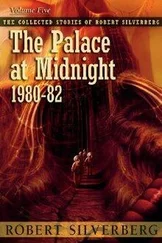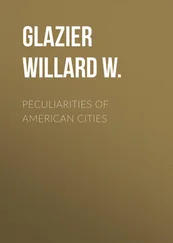Willard Glazier - Ocean to Ocean on Horseback
Здесь есть возможность читать онлайн «Willard Glazier - Ocean to Ocean on Horseback» — ознакомительный отрывок электронной книги совершенно бесплатно, а после прочтения отрывка купить полную версию. В некоторых случаях можно слушать аудио, скачать через торрент в формате fb2 и присутствует краткое содержание. Жанр: foreign_antique, foreign_prose, Путешествия и география, на английском языке. Описание произведения, (предисловие) а так же отзывы посетителей доступны на портале библиотеки ЛибКат.
- Название:Ocean to Ocean on Horseback
- Автор:
- Жанр:
- Год:неизвестен
- ISBN:нет данных
- Рейтинг книги:4 / 5. Голосов: 1
-
Избранное:Добавить в избранное
- Отзывы:
-
Ваша оценка:
- 80
- 1
- 2
- 3
- 4
- 5
Ocean to Ocean on Horseback: краткое содержание, описание и аннотация
Предлагаем к чтению аннотацию, описание, краткое содержание или предисловие (зависит от того, что написал сам автор книги «Ocean to Ocean on Horseback»). Если вы не нашли необходимую информацию о книге — напишите в комментариях, мы постараемся отыскать её.
Ocean to Ocean on Horseback — читать онлайн ознакомительный отрывок
Ниже представлен текст книги, разбитый по страницам. Система сохранения места последней прочитанной страницы, позволяет с удобством читать онлайн бесплатно книгу «Ocean to Ocean on Horseback», без необходимости каждый раз заново искать на чём Вы остановились. Поставьте закладку, и сможете в любой момент перейти на страницу, на которой закончили чтение.
Интервал:
Закладка:
The building is an unpretending but substantial structure, plainly showing its age both in the exterior and the interior. Its size – seventy-four feet long by seventy-five feet wide – is apparently increased by the lack of seats on the main floor and even in the gallery, where only a few of these indispensable adjuncts to the comfort of a later luxurious generation are provided. The hall is granted rent free for such public or political meetings as the city authorities may approve, and probably is only used for gatherings where, as in the old days, the participants bring with them such an excess of effervescent enthusiasm as would make them unwilling to keep their seats if they had any. The walls are embellished by portraits of Hancock, Washington, Adams, Everett, Lincoln, and other great personages, and by Healy's immense painting – sixteen by thirty feet – of "Webster Replying to Hayne."
For a short time Faneuil Hall was occupied by the Boston Post Office, while that institution, whose early days were somewhat restless ones, was seeking a more permanent home. For thirty years after the Revolution, it was moved about from pillar to post, occupying at one time a building on the site of Boston's first meeting-house, and at another the Merchants' Exchange Building, whence it was driven by the great fire of 1872. Faneuil Hall was next selected as the temporary headquarters, next the Old South Church, after which the Post Office – a veritable Wandering Jew among Boston public institutions – was finally and suitably housed under its own roof-tree, the present fine building on Post Office Square.
To the Old South Church itself, the sightseer next turns, if still bent on historical pilgrimages. This venerable building of unadorned brick, whose name figures so prominently in Revolutionary annals, stands at the corner of Washington and Milk streets. Rows of business structures, some of them new and clean as a whistle and almost impertinently eloquent of the importance of this world and its goods, cluster around the old church and hem it in, but are unable to jostle it out of the quiet dignity with which it holds its place, its heavenward-pointing spire preaching the sermons against worldliness which are no longer heard within its ancient walls. To every window the fanciful mind can summon a ghost – that of Benjamin Franklin, who was baptized and attended service here; Whitfield, who here delivered some of the soul-searching, soul-reaching sermons, which swept America like a Pentecostal flame; Warren, who here uttered his famous words on the anniversary of the Boston Massacre; of the patriot-orators of the Revolution and the organizers of the Boston Tea-Party, which first took place as a definite scheme within these walls. Here and there a red-coated figure would be faintly outlined – one of the lawless troop of British soldiers who in 1775 desecrated the church by using it as a riding-school.
At present the church is used as a museum, where antique curiosities and historical relics are on exhibition to the public, and the Old South Preservation Committee is making strenuous efforts to save the building from the iconoclastic hand of Progress, which has dealt blows in so many directions in Boston, destroying a large number of interesting landmarks. Its congregation left it long ago, in obedience to that inexorable law of change and removal, which leaves so many old churches stranded amid the business sections of so many of our prominent cities, and settled in the "New Old South Church" at Dartmouth and Boylston streets.
It is curious and in its way disappointing to us visitors from other cities to see what "a clean sweep" the broom of improvement has been permitted in a city so intensely and justly proud of its historical associations as Boston. Year by year the old landmarks disappear and fine new buildings rise in their places and Boston is apparently satisfied that all is for the best. The historic Beacon, for which Beacon Hill was named and which was erected in 1634 to give alarm to the country round about in case of invasion, is not only gone, but the very mound where it stood has been levelled, this step having been taken in 1811. The Beacon had disappeared ten years before and a shaft sixty feet high, dedicated to the fallen heroes of Bunker Hill, had been erected on the spot and of course removed when the mound was levelled. The site of Washington's old lodgings at Court and Hanover street – a fine colonial mansion, later occupied by Daniel Webster and by Harrison Gray Otis, the celebrated lawyer – is now taken up by an immense wholesale and retail grocery store; the splendid Hancock mansion, where the Revolutionary patriot entertained Lafayette, D'Estaing, and many other notabilities of the day, was torn down in 1863, despite the protests of antiquarian enthusiasts. The double house, in one part of which Lafayette lived in 1825, is still standing; the other half of it was occupied during his lifetime by a distinguished member of that unsurpassed group of literati who helped win for Boston so much of her intellectual pre-eminence – George Ticknor, the Spanish historian, the friend of Holmes, Lowell, Whittier and Longfellow, from whom the latter is supposed to have drawn his portrait of the "Historian" in his "Tales of a Wayside Inn." The Boston Public Library, that magnificent institution, which has done so much to spread "sweetness and light," to use Matthew Arnolds' celebrated definition of culture, among the people of the "Hub," counts Mr. Ticknor among the most generous of its benefactors.
One interesting spot for the historical pilgrim is the oldest inn in Boston, the "Hancock House," near Faneuil Hall, which sheltered Talleyrand and Louis Philippe during the French reign of terror.
In addition to the fever for improvement, Boston owes the loss of many of her time-hallowed buildings to a more disastrous agency – that of the conflagrations which have visited her with strange frequency. A fire in 1811, which swept away the little house on Milk street where Franklin was born – and which is now occupied by the Boston Post – another in 1874, in which more than one hundred buildings were destroyed; and the "Great Boston Fire" of 1872, followed by conflagrations in 1873, 1874, 1877 and 1878, seemed to indicate that the fire fiend had selected Boston as his especial prey. To the terrible fire of 1872 many precious lives, property valued at eighty millions of dollars, and the entire section of the city enclosed by Summer, Washington, Milk and Broad streets were sacrificed. The scene was one a witness never could forget. Mingled with the alarum of the fire-bells and the screams and shouts of a fear-stricken people came the sound of terrific explosions, those of the buildings which were blown up in the hope of thus "starving out" the fire by making gaps which it could not overstep, and to still further complete the desolation, the gas was shut off, leaving the city in a horror of darkness; but the flames swept on like a pursuing Fury, wrapping the doomed city still closer in her embrace of death, and who was not satisfied until she had left the business centre of Boston a charred and blackened ruin.
This same district is to-day, however, the most prosperous and architecturally prepossessing of the business sections of the city, practically illustrating another phase of that same spirit of improvement and civic pride which has overturned so many ancient idols and to-day threatens others. Indeed, it would be a churlish disposition which would lament the disappearance of the old edifices, the straightening of the thoroughfares, the alterations without number which have taken place, and which have resulted in the Boston of to-day, one of the most beautiful, prosperous and public-spirited cities in the world. The intelligence and local loyalty, for which her citizens are renowned, have been set to work to attain one object – the modest goal of perfection. Obstacles which some cities might have contentedly accepted as unavoidable have been swept away; advantages with which other cities might have been satisfied have been still further extended and improved. The 783 acres originally purchased by the settlers of Boston from William Blaxton for £30 has been increased over thirty times, until the city limits comprise 23,661 acres; this not by magic as it would seem, but by annexation of adjoining boroughs – Roxbury, Dorchester, Charlestown, and others – and by reclamation of the seemingly hopeless marshy land to the north and south of the city. The "Back-Bay" district, the very centre of Boston's wealth, fashion and refinement, the handsomest residence quarter in America, is built upon this "made land," which it cost the city about $1,750,000 to fill in and otherwise render solid.
Читать дальшеИнтервал:
Закладка:
Похожие книги на «Ocean to Ocean on Horseback»
Представляем Вашему вниманию похожие книги на «Ocean to Ocean on Horseback» списком для выбора. Мы отобрали схожую по названию и смыслу литературу в надежде предоставить читателям больше вариантов отыскать новые, интересные, ещё непрочитанные произведения.
Обсуждение, отзывы о книге «Ocean to Ocean on Horseback» и просто собственные мнения читателей. Оставьте ваши комментарии, напишите, что Вы думаете о произведении, его смысле или главных героях. Укажите что конкретно понравилось, а что нет, и почему Вы так считаете.





![Джон Сэндфорд - Ocean Prey [calibre]](/books/384313/dzhon-sendford-ocean-prey-calibre-thumb.webp)






